Algarve-South-Portugal.com
The best independent guide to Tavira
Algarve-South-Portugal.com
The best independent guide to Tavira
Day trip to Tavira – A self-guided 1 day tour of Tavira and walking tour
Located in Portugal's eastern Algarve, Tavira is one of the region's most charming towns. Unlike the busier resort areas to the west, Tavira has retained its traditional Portuguese character and unhurried ambience.
The town has a fascinating mix of architectural styles from its rich history – you'll see Moorish influences alongside Renaissance buildings and classic Portuguese designs. If you're looking for a day trip that shows you the real Algarve beyond the beach resorts, Tavira is the ideal destination to visit for a day trip.
Tavira is wonderfully easy to explore. You can walk to all the main sights in a single day, discovering churches with beautiful tile work, a castle with great views, peaceful squares, and plenty of riverside spots to stop for a coffee or meal.
This guide provides everything you need for the perfect day trip to Tavira, including a detailed walking tour and self-guided route to help you make the most of your time in this charming town.
Related articles: Tavira sights & activities
Highlights of Tavira
Ponte Romana - This elegant seven-arched medieval bridge links the Moorish quarter with the new town while offering picturesque views of the Gilão River.
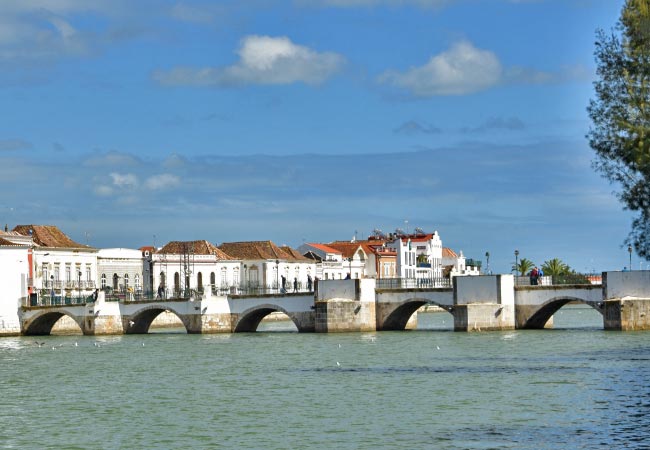
Castelo de Tavira – Standing at the city's highest point, these Moorish fortress ruins offer spectacular panoramic views of Tavira's distinctive terracotta rooftops.
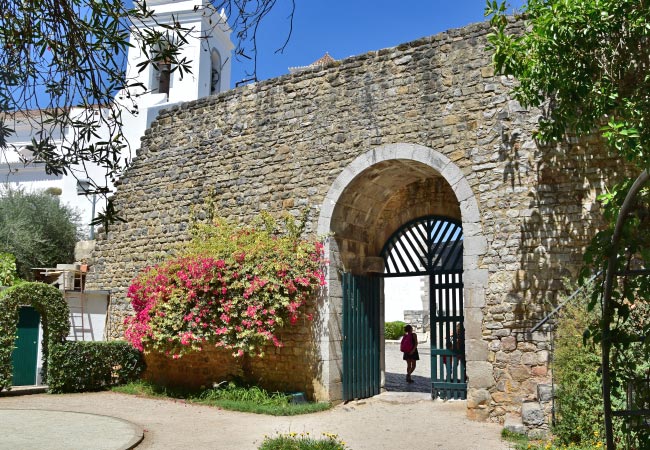
Igreja da Misericórdia - A Renaissance masterpiece reflecting Tavira's historical wealth, this 16th-century church features an ornate façade and magnificent blue and white azulejo tiles.
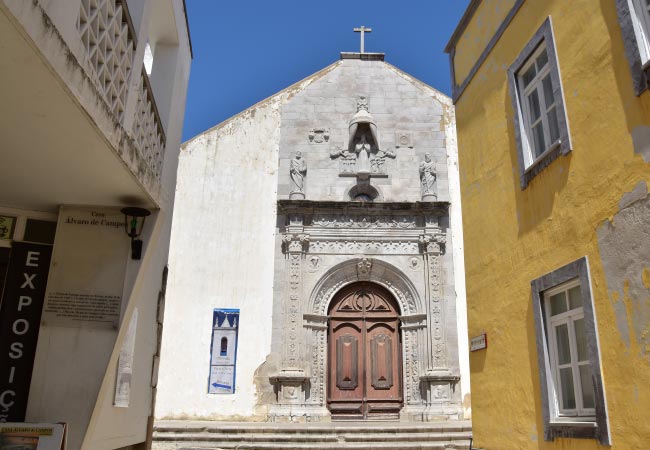
Praça da República - A charming plaza that serves as Tavira's social heart, surrounded by elegant architecture including the distinctive town hall.
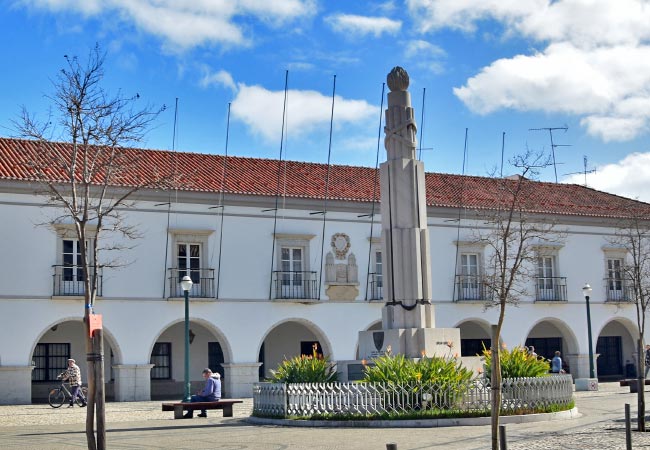
Practicalities for Visiting Tavira
Time Needed
Allow yourself around 5 hours total in Tavira for a comprehensive visit - 4 hours for exploring the major sights and an additional hour for lunch and a couple of coffee breaks. While the main attractions could technically be rushed through in less than two hours, Tavira offers a surprising amount to see, and you'll appreciate having extra time to explore at a relaxed pace.
Cost Considerations
Tavira is a refreshingly affordable destination by Algarve standards. Most of the major attractions are free to visit, including the Roman Bridge, the town's beautiful churches, and the historic center itself. Most of your budget will likely go toward food and transportation rather than admission fees.
Walking Conditions
Tavira is best explored on foot, and you should expect to walk around 3-4 km throughout your visit. The good news is that unlike many Portuguese historic towns, Tavira is relatively flat with only a few gentle inclines. The steepest section is the short climb to the castle, but it's manageable for most visitors with reasonable mobility. Wear comfortable walking shoes, as many streets are cobbled.
Getting There
By Train: The train is generally the most reliable option for visiting Tavira from elsewhere in the Algarve. The Regional trains run regularly along the Algarve line, connecting Faro to Tavira in approximately 30-40 minutes. From Albufeira, expect a journey of about 1 hour. The train station in Tavira is conveniently located about a 10-minute walk from the historic center (GPS: 37.120, -7.655 – link to google maps). For full details see the Comboios de Portugal website: https://www.cp.pt/
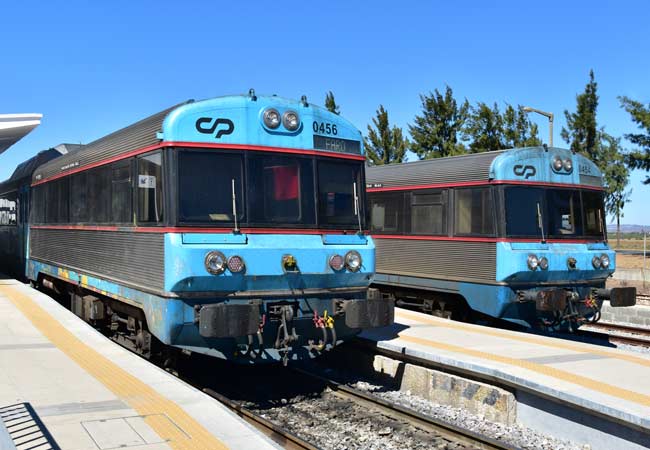
By Car: If you're driving to Tavira, take the A22 toll highway or the N125 national road that runs parallel to it. The main public car park is located on the western side of town near the Mercado Municipal (GPS 37.123, -7.643). This spacious car park is just a short 5-minute walk from the historic center. Parking here is much easier than trying to find street parking in the narrow historic streets.
By Bus: Vamus provides regular connections to Tavira from most Algarve towns. The bus station is centrally located (GPS 37.127, -7.652) and may be more convenient than the train if you're staying somewhere without easy train access. https://vamus.pt/
If you would prefer to discover the eastern Algarve with the convenience of a guide, GetYourGuide provides some excellent tours of the region, and these include:
Extending Your Tavira Day Trip
If you have a car or some extra time, consider these worthwhile additions to your Tavira visit:
Ilha de Tavira Beach - Just a short ferry ride from Tavira's town center, Ilha de Tavira offers some of the Algarve's most beautiful beaches. The ferry departs regularly from the harbour front in Tavira and cost €2.50 for a return ride. The island has beach bars and restaurants during summer months, making it easy to spend a relaxing afternoon here.
Anchor Cemetery at Praia do Barril - Located about 5 km from Tavira, the fascinating Anchor Cemetery (Cemitério das Âncoras) at Praia do Barril is a remarkable sight. Over 100 rusting anchors stand planted in the sand as a memorial to the region's tuna fishing industry that once thrived here. To reach it, park at Pedras D'el Rei and take the small tourist train across the sandbar island (or enjoy the 15-minute walk). The beach itself is excellent, with soft sands, turquoise seawaters and good facilities.
Cacela Velha Viewpoint - Just a 20-minute drive east of Tavira, the tiny whitewashed village of Cacela Velha offers one of the most spectacular viewpoints in the entire Algarve. Perched on a small hill overlooking the Ria Formosa lagoon, the panoramic views from the fortress walls are simply breathtaking.
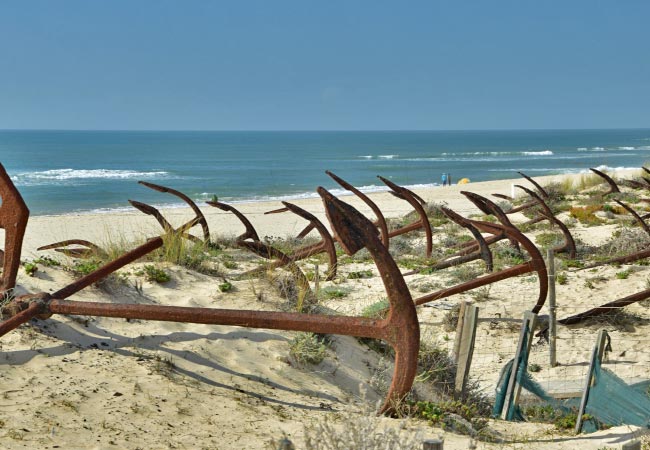
The Anchor Cemetery

Cacela Velha
Comparing Tavira to Other Algarve Day Trip Destinations
Tavira vs. Vila Real de Santo António - Tavira offers significantly more to see than Vila Real de Santo António. While Vila Real has a pleasant riverside promenade and unique grid layout, it can be fully explored in 45 minutes, whereas Tavira needs at least 4 hours.
Tavira vs. Loulé - Both towns offer authentic Portuguese experiences, but Tavira gives you more to explore. Loulé's market and castle are worth seeing but confined to a small area. Tavira spreads across both sides of the Gilão River with a richer variety of historic sites and architectural styles. (Loule guide)
Tavira vs. Faro - These cities are comparable in terms of historical significance and number of attractions. Faro offers excellent museums and a walled old town, while Tavira counters with its riverside setting and more relaxed atmosphere. Both cities make for enjoyable day trips. (Faro day trip guide)
Tavira vs. Olhão - While many visitors only explore Olhão's waterfront and markets, Tavira offers much more to discover beyond its main attractions. Olhão feels more like a working city, whereas Tavira has maintained a stronger traditional character that many visitors find more charming. (Olhão guide)
Based on variety of sights and interests, we recommend exploring the towns of the central and eastern Algarve in this order: 1) Faro 2) Tavira 3) Olhão 4) Loulé 5) Vila Real de Santo António
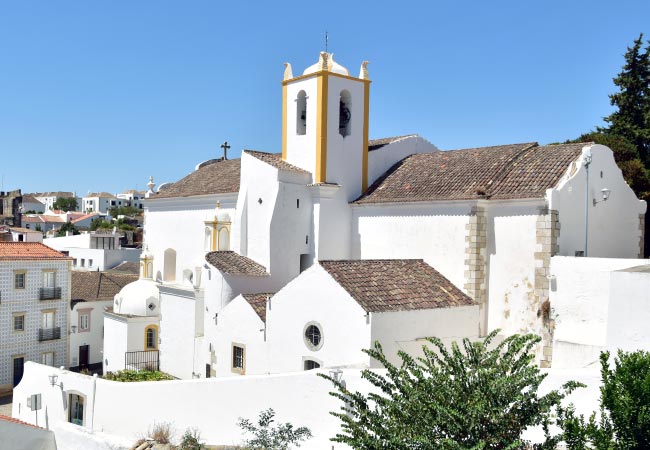
Best Places for Lunch in Tavira
Tavira offers several excellent options for an authentic Algarvian lunch experience. Here are some standout choices:
A Ver Tavira - For something special, this rooftop restaurant offers stunning views across Tavira's terracotta rooftops. While slightly higher-priced, it worthwhile for those wanting to combine lunch with spectacular scenery. Link to Google Maps
O Tonel - Restaurant is tucked away in a back street of Tavira is a little gem, known for its high-quality food and excellent service. Google Maps
Aquasul - Known for excellent seafood and rice dishes, this restaurant is popular with locals-always a good sign! Google Maps
Zeca da Bica - For budget-conscious travellers, this simple tasca offers excellent home-style cooking and daily lunch specials at very reasonable prices. (Google maps)
O Castelo - A charming, family-run establishment serving authentic Algarvian cuisine. It's tucked away from the main tourist areas, offering a more local experience. (Google maps)
Restaurante D'Gusta - A local favourite serving traditional Portuguese cuisine with a focus on fresh seafood located at the Cais das Quatro Águas harbour. Their cataplana (seafood stew) is exceptional, and is worth the walk from the town centre. (Google maps)
Suggested 1 day walking tour of Tavira
The suggested walking tour begins from the train station which is to the west of Tavira. The green line marks the suggested route which is 5.3km long. (Note zoom in or out to see all of the points.
Legend: 1) Igreja de San Francisco 2) Praça da República 3) Islamic Museum 4) Igreja da Misericórdia 5) Palácio da Galeria 6) Castelo de Tavira 7) Igreja de Santa Maria do Castelo 8) Camera Obscura 9) Convent of Nossa Senhora da Graça 10) Igreja de Santiago 11) Jardim do Coreto 12) Ponte Romana 13) Jardim da Alagoa 14) Igreja de Nossa Senhora da Ajuda 15) Mercado da Ribeira 16) Mercado Municipal 17) Bairro dos Pescadores
From the train station, walk down the Avenida Dr. Mateus Teixeira de Azevedo for approximately 450m before turning right into the Praça Zacarias Guerreiro where the Igreja de São Francisco (1) stands.
Head down the hill to the Praça da República (2) – This vibrant main square of Tavira is lined with palm trees, cafés, and the distinctive town hall building. It's the perfect spot for a coffee before going into the Islamic Museum (3) which has part of the original walls excavated along with the Tavira Vase. The Tavira Vase is a stunning 11th-century Islamic ceramic masterpiece featuring 14 intricate figurines and stands as one of Portugal's most significant archaeological treasures.
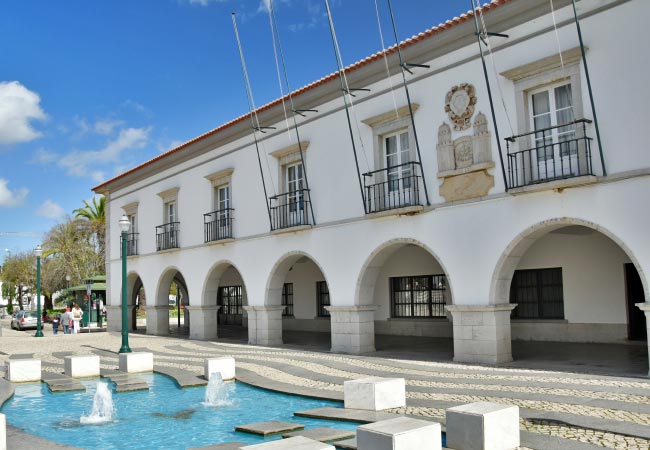
After the museum, pass through the Porta de D. Manuel gate, one of the original gates into the city, and this leads to the Igreja da Misericórdia (4). This stunning 16th-century Renaissance church features an ornate portal and magnificent interior decorated with beautiful blue and white azulejo tiles depicting the Works of Mercy.
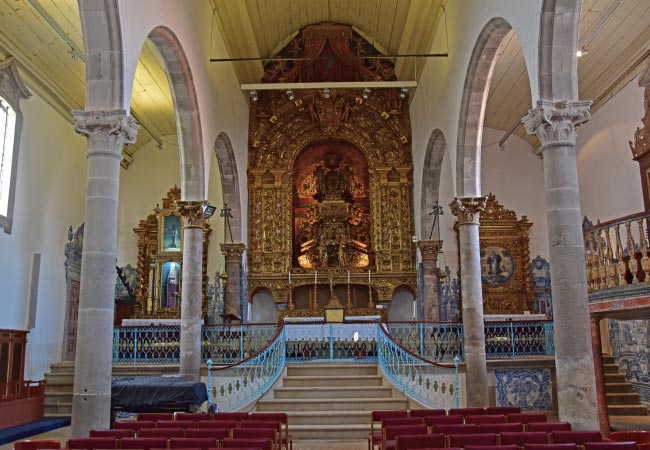
Next is the Palácio da Galeria (5), an elegant 16th-century Renaissance palace that houses Tavira's Municipal Museum, where you'll discover both the city's fascinating history and rotating contemporary art exhibitions.
Standing at the highest point of the city is the Castelo de Tavira (6). These atmospheric ruins of a Moorish fortress provide the best panoramic views across town. Climb to the preserved walls and tower to see Tavira's distinctive scissor-shaped rooftops, surrounding countryside, and the Ria Formosa lagoon in the distance.
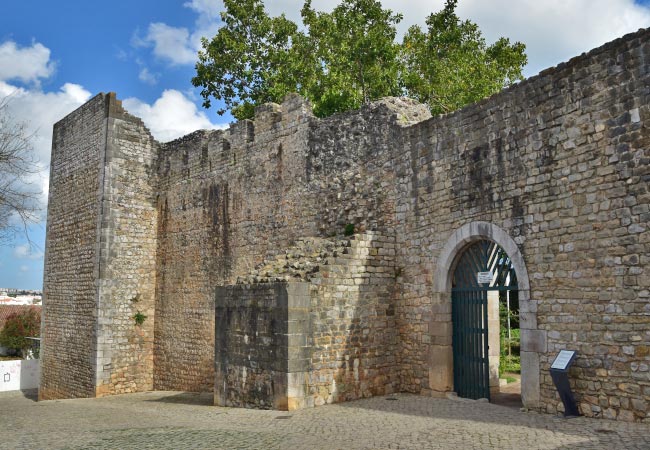
Behind the castle is the Igreja de Santa Maria do Castelo (7), a 13th-century church built on the site of a former mosque. It houses the tombs of seven knights killed by Moors in 1242. Look for the distinctive Gothic doorway and impressive gilded altarpiece.
Housed in the converted water tower is the Camera Obscura (8), a unique attraction that uses an ancient optical system to project a 360° live moving image of the entire town. The 15-minute guided demonstrations offer a fascinating perspective of Tavira from above.
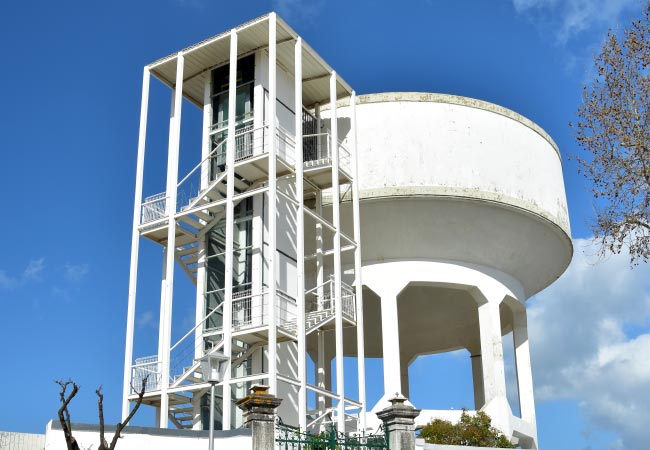
Opposite is the vividly yellow-painted Convent of Nossa Senhora da Graça (9), now a luxury Pousada hotel. This beautifully restored 16th-century convent contains a magnificent Renaissance cloister with elegant arches, original features, and a tranquil atmosphere.
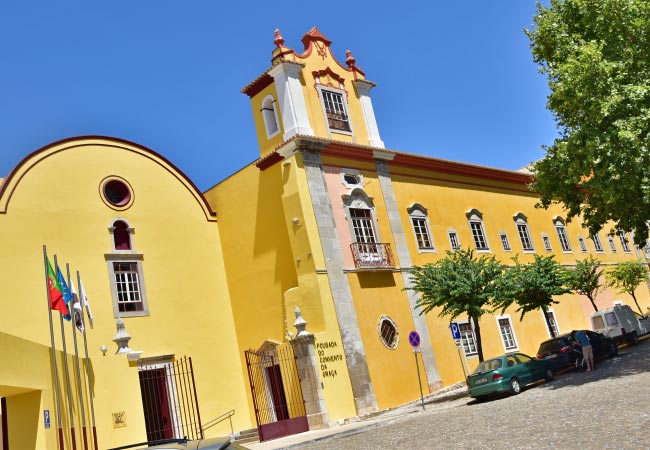
Following the road around the Largo Dr. Jorge Correia is the Igreja de Santiago (10) notable for its connection to the famous Camino de Santiago pilgrimage route. Tavira was historically an important stop for pilgrims heading to Santiago de Compostela, and this church served them. The simple white exterior gives way to a beautiful interior with traditional tilework and religious artifacts.
Passing through the Praça da República (2) leads to the waterfront and the Jardim do Coreto (11). This charming riverside garden with its ornate iron bandstand offers shady respite during hot days. Its peaceful setting alongside the Gilão River makes it an ideal spot to rest before continuing your explorations.
The Gilão River is the lifeblood of Tavira, dividing the town into two distinct parts while creating its picturesque character. The river originates in the hills to the north and widens as it approaches the town before flowing into the Ria Formosa lagoon. During low tide, you'll spot fishermen digging for clams and cockles in the mud flats, highlighting the town's continued connection to traditional seafood harvesting.

Crossing the Gilão River is the Ponte Romana (12) - a seven-arched stone bridge that is actually medieval rather than Roman as its name suggests. It elegantly spans the Gilão River, connecting the two sides of town with the Moorish quarter on the western side and the Renaissance area on the east. There is a lovely viewpoint of the bridge from the Rua Pelames.
After the bridge, head to the pretty Jardim da Alagoa (13) where the Igreja de São Paulo (14) stands. This distinctive octagonal church stands out among Tavira's religious buildings with its unique architectural style. Inside is an impressive baroque altar and beautiful blue and white azulejo tiles that illustrate scenes from the life of St. Paul.
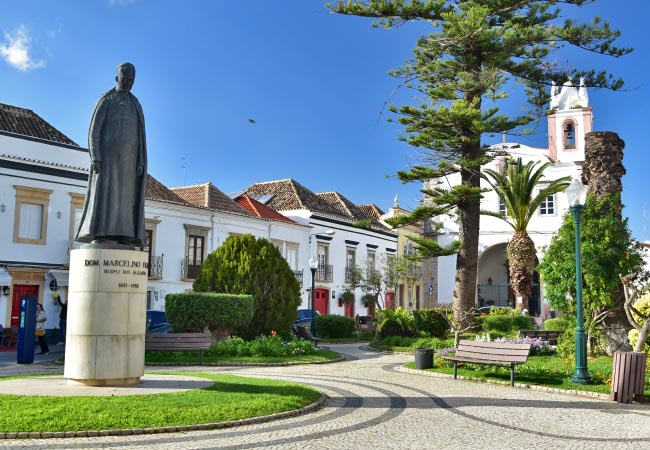
The tour now recrosses the Gilão River to visit the Mercado da Ribeira (15), Tavira's original market building constructed in 1887 that stands on the riverbank. This historic structure served as Tavira's main market until 1999, when trading activities moved to the larger and more modern Mercado Municipal.
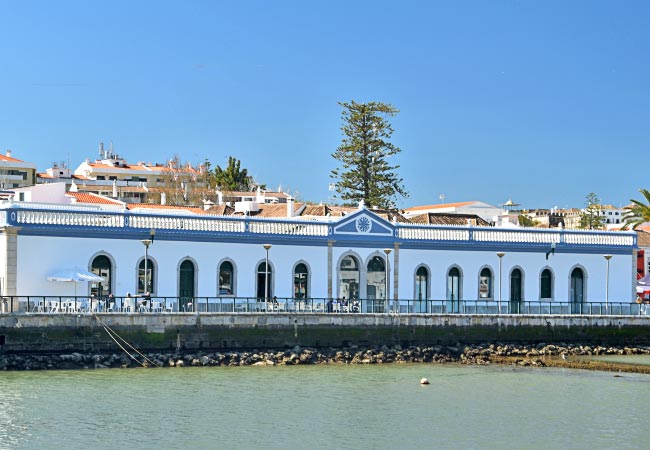
Next is a pleasant stroll along the riverbanks, where fishing boats moor and where you'll find the departure point for the ferry to Ilha de Tavira. This peaceful waterfront area offers a glimpse into Tavira's enduring connection to fishing and the sea.
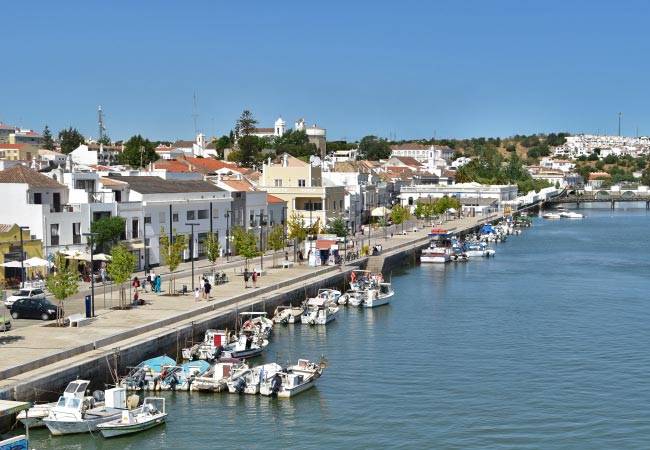
At the end of the waterfront, head up to the busy Ponte dos Descobrimentos bridge. This bridge provides some of the best views of Tavira. Looking south, you can see the river widening as it flows toward the Ria Formosa lagoon and the Atlantic Ocean beyond.
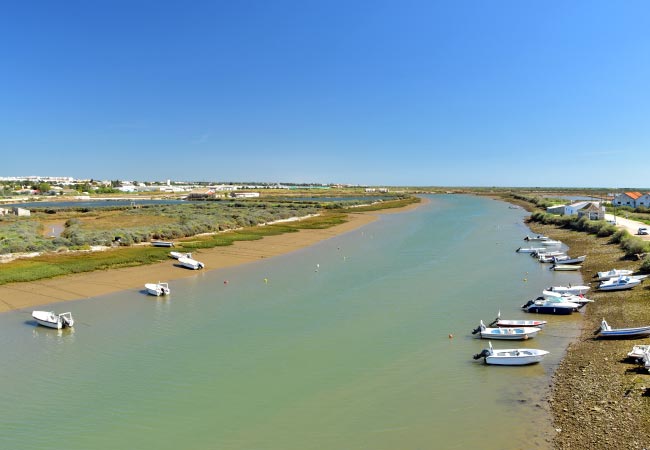
After crossing the Ponte dos Descobrimentos, the tour continues to the Mercado Municipal (16). This lively market displays the region's fresh produce, local cheeses, and just-caught seafood. Even if you're not shopping, it provides an authentic glimpse into everyday Algarvian life and local culinary traditions.
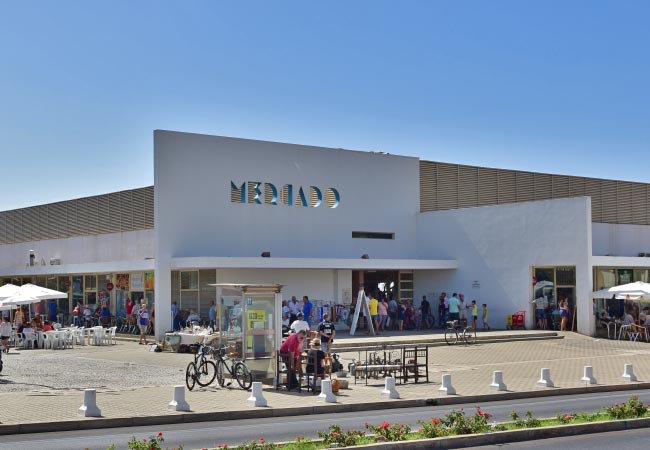
From the market, wander through the charming Bairro dos Pescadores (17), the traditional fishermen's quarter of Tavira. This authentic neighbourhood features cobbled streets, modest whitewashed houses adorned with colourful trim and decorative Portuguese azulejo tiles.
The tour heads back to the Praça da República (2) where you could stop for a coffee or late lunch, before returning to the train station.
Our most popular guides to Tavira and the eastern Algarve
A complete list of all of our Algarve guides
Algarve-South-Portugal.com, with over 200 pages of holiday guides, if it's not here, it's probably not in the Algarve
Wedding dress shopping- Bridesmaids: who to ask? - Finding a wedding dress - Finding a wedding photographer- Creating a seating plan - Choosing wedding favours

























